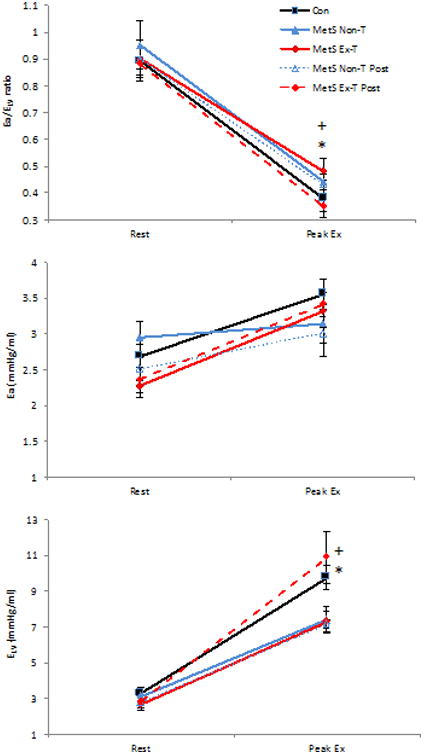Figure 3.

The effects of exercise training on resting and peak exercise arterial-ventricular coupling in patients with the metabolic syndrome (MetS). Change in arterial-ventricular coupling (Ea/ELV), LV end-systolic elastance (ELV), and arterial elastance (Ea) from rest to peak exercise in Mets patients who underwent exercise training (MetS-ExT, diamond) and in MetS who remained inactive (MetS-NonT, triangles). Healthy age- and sex-matched controls are depicted by the solid black line and closed squares. Post intervention for both MetS groups are depicted by a dashed line. Control healthy age-matched individuals are depicted by black squares with a solid line. Exercise training significantly reduced peak Ea/ELV, and increased peak ELV in MetS, and there was a significant time (pre- and post-intervention) by group (MetS-ExT vs. MetS-NonT) for Ea/ELV and ELV. *P<0.05 illustrates significant differences pre and post intervention in MetS Ex-T; +P<0.05 time by group interaction. Data presented as means ± SEM. Created from previously published data, Fournier et al. (27).
